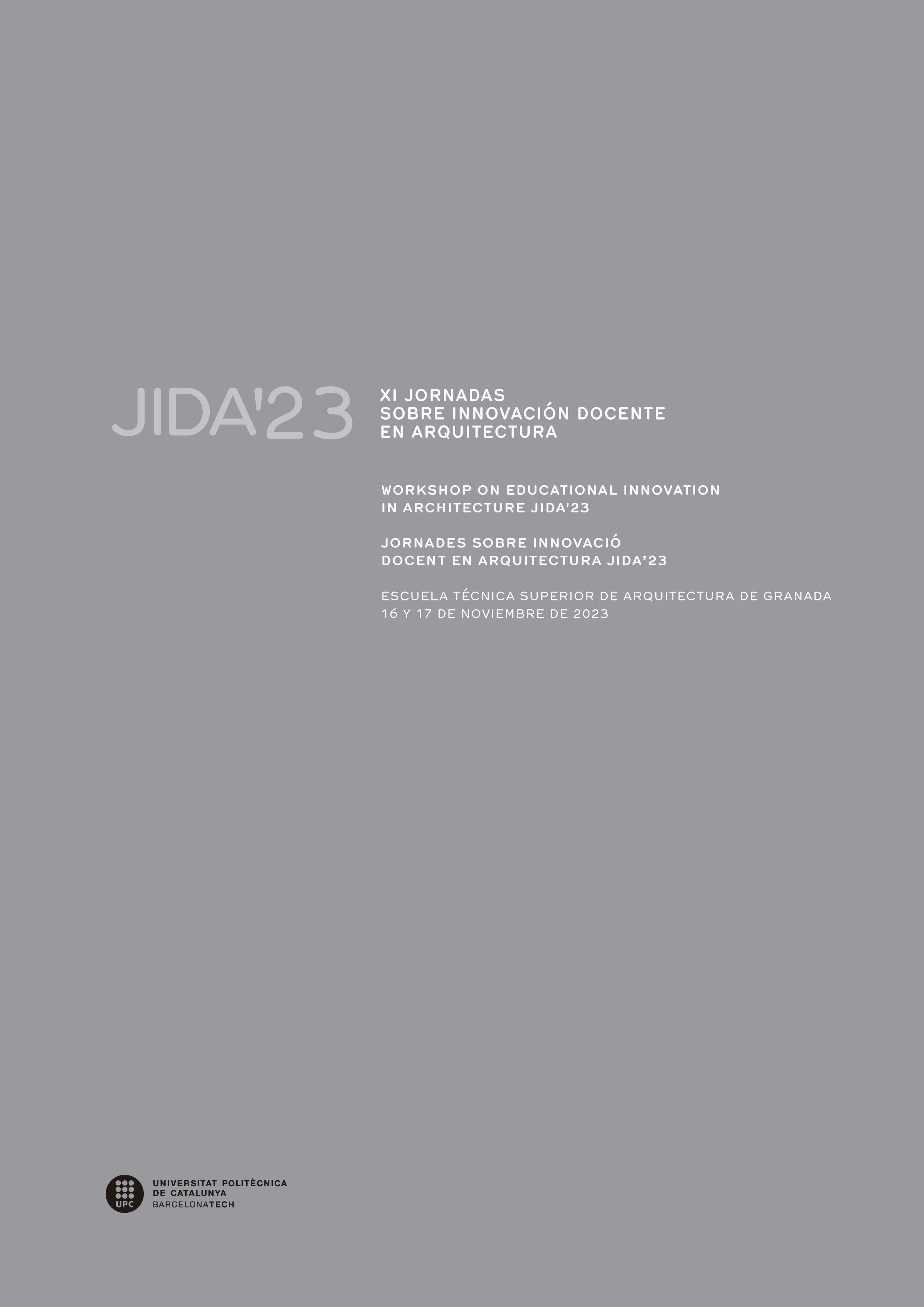“El Taller Invitado”: a teaching space to link profession and education
DOI:
https://doi.org/10.5821/jida.2023.12330Keywords:
architectural studio, architectural profession, architectural educaction, taller invitado, architectureAbstract
The communication is an architectural studio format designed with the aim of reserving a space that guarantees the dialogue between education and profession within the architecture career curriculum. This studio operates through an open invitation to an architect outside the academic environment, to teach for a whole semester within the intent of promote a direct interrelation between disciplinary teaching and practice. After 25 years of implementation, adjustments that this educational space have been required, there are some aspects that can be discussed. From a reflective perspective, certain existing tensions between training and profession are addressed, such as the correlation between professional quality and teaching quality, or the relevance of destabilizing the traditional conception of architectural practice not only from an educational perspective that thinks about the future, but also from other fields of disciplinary exercise.
References
Barrientos Díaz, Macarena. 2020. Titulación y habilitación profesional del arquitecto en la era post Bolonia: Revisión y análisis comparativo de dos modelos representativos: Chile y España. Tesis Doctoral. Universidad de Alcalá y Universidad del Bío Bío. https://ebuah.uah.es/dspace/handle/10017/45188?locale-attribute=es.
Buchanan, Peter. 2012. “The Big Rethink: Architectural Education”. The Architectural Review, 232 (1388): 91- 101.
Bilello, Joseph. 1991. “Interaction and Interdependence: University-based Architectural Education and the Architectural Profession”. American Institute of Architects.
Cuff, Dana. 1996. “Celebrate the gap between education and practice”. Architecture, 85 (8):94-95.
Cunningham, Allen. 2005. “Notes on education and research around architecture”. The Journal of Architecture, 10 (4): 415-441.
Coleman, Nathaniel. 2010. “The Limits of Professional Architectural Education”. International Journal of Art & Design Education 29 (2): 200-212.
Fuentealba, J. et Al. 2019. Sistemas universitarios: ¿Soporte o corsé para la enseñanza de la arquitectura? JIDA’19. VII Jornadas sobre Innovación Docente en Arquitectura. Madrid, ETSAM-UPM, 14-15 noviembre, 2019, págs. 168-179. DOI: 10.5821/jida.2019.8306
Greene, M; Scheerlinck, K; Schoonjans, Y. 2012. “The new architect. Towards a shared authorship”. Good practices best practices. Highlighting the Compound Idea of Education, Creativity, Research and Practice. TU Delft.
Masdeu, Marta. 2018. La transformación del taller de arquitectura en nuevos espacios de aprendizaje. Un estudio sobre el proceso de integración entre la enseñanza y la práctica profesional. Tesis Doctoral. Universidad de Girona. http://hdl.handle.net/10803/482043
Monedero, Javier. 2018. Crítica de la profesión de arquitecto.
Torres-Nadal, J. y Nieto, E. 2014. El Modelo Alicante: disidencias espaciales en la enseñanza del proyecto de arquitectura. Alicante: Estudio Torres Nadal. http://www.torresnadal.com/el-modelo-alicante-disidencias-espaciales-en-la-ensenanza-del-proyecto-de-arquitectura/
Nieto, Enrique. 2014 “Escuelas (alternativas) de arquitectura ¿Modelos (alternativos) de oposición?”. Hipo2 Pedagogías Desobedientes, 2: 24-31.
Schön, Donald. 1987. La formación de profesionales reflexivos. Hacia un nuevo diseño de la enseñanza y el aprendizaje en las profesiones. Barcelona: Paidós.
Schweitzer, Ángela. 1990. (Ed.) El Arquitecto en Chile: Universidad y Profesión. Santiago: Corporación de promoción universitaria.



















